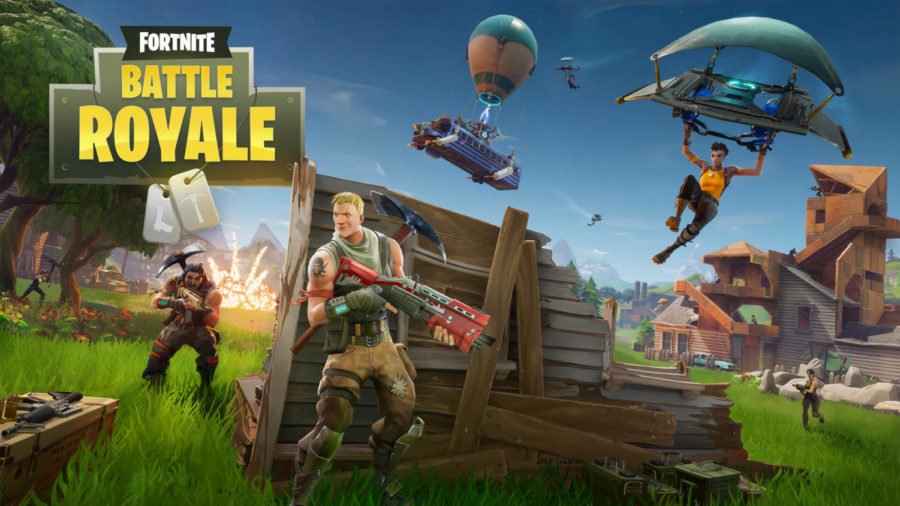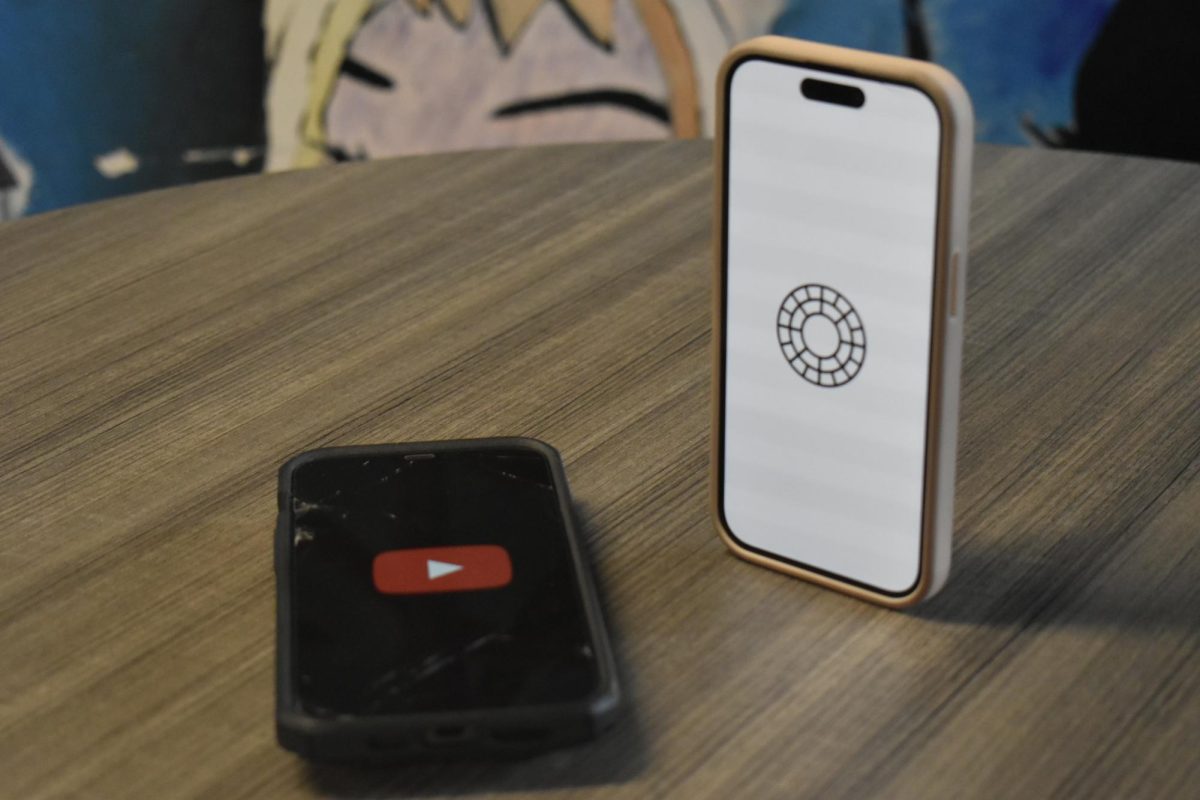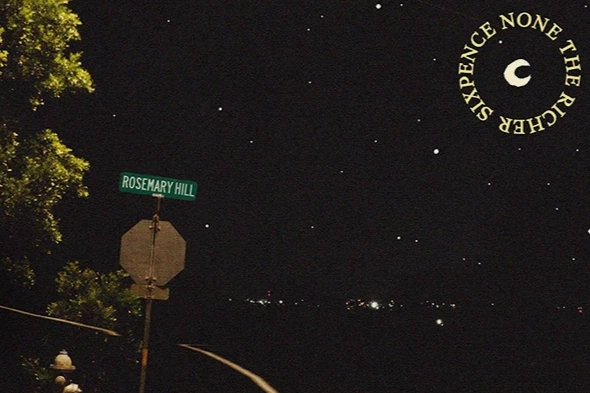If you go to anyone in this school and ask them if they know what ‚ÄúFortnite‚ÄĚ is, they will almost certainly say yes, which is kind of strange. Games have blown up in popularity before, but have never quite seen the exposure that Fortnite has gotten. Even people who don‚Äôt play games know of Fortnite. So, why is the game so big?
To understand Fortnite, you have to understand its history. Fortnite was originally announced in 2011 by the developer Epic Games as a more fun and Cartoon-ish game focused on resource gathering, fort building and survival. This announcement was a big shift for Epic since their main game at this time was the ‚ÄúGears of War‚ÄĚ series, which focused heavily on cutting-edge graphics and story-driven gameplay. They had never done a game in this style before, and it was a huge gamble for them to do so. Nevertheless, fans of Epic seemed interested, and the project began.
Five years later, ‚ÄúFortnite: Save the World‚ÄĚ launched in July of 2017. While the game received some initial praise, it was criticized for its overbearing menus and nearly unmanageable skill trees. This bundled with a starting price of $40, and people just weren‚Äôt willing to pay for the game. Rather than let Fortnite die and move on, Epic decided they wouldn‚Äôt take this sitting down. They risked everything with this new game, and they were not going to settle for it being mediocre. Epic decided that if they wanted Fortnite to be the wild success they had dreamed of, it was going to have to latch onto gaming’s newest trend: battle royale.
Leading this trend was a game known as ‚ÄúPlayerunknown’s Battlegrounds,‚ÄĚ (PUBG) which released in March of 2017 from the game studio Bluehole. PUBG saw almost immediate success, and gained huge recognition in the gaming community. By the end of 2017, it had even won ‘Best Multiplayer Game’ at The Game Awards. PUBG‚Äôs recipe for success was simple: Throw 100 players onto an open map filled with weapons, vehicles, and resources. As time went on, this map shrunk, forcing confrontation between players. The last player standing wins. This ‘Battle Royale’ style made the game easy to pick up and fun to play. Its simplicity also made it easy to copy.
In September of 2017, Epic announced their own ‘Battle Royale’ mode for Fortnite, but they knew this wouldn‚Äôt be enough to rival PUBG. Where Fortnite had building and scavenging, PUBG had vehicles and a more expansive map. They needed something to sweeten the deal and convince everyone who had bought PUBG to switch games to Fortnite. Epic decided that if they wanted a bigger audience, their game would have to be more accessible. While PUBG is only available on PC and XBOX, Fortnite included PlayStation, reaching an entirely new market. As one last guarantee to ensure Fortnite was universally accessible, it released for free. ¬†¬†¬†¬†¬†
Since then, “Fortnite: Battle Royale” has spread like wildfire, emassing over 45 million players around the world. In an effort to continue to make Fortnite as accessible as possible, Epic has announced they will be making a mobile version available on Android and Apple. PUBG on the other hand has been losing players for the past couple months, and has brought up the possibility of legal action against Fortnite for taking their game style, but haven‚Äôt shown any signs of following through yet.
Whether or not Fortnite is in the wrong for copying PUBG, the game has become undeniably successful, and due to its free cost, will most likely continue to only get bigger. At school, Fortnite has taken center stage. It has become one of the most talked about video games, and has created a community of students eager to play together. And if you ever want to try it out, all it takes is a download.





![There are more than 20 open cardio machines at Crunch Fitness. I enjoyed the spacious environment at Crunch, a sentiment that was shared by sophomore Sanjana Daggubati. ‚Äú[Going to] Crunch Fitness was the right decision because [it] feels more professional. Crunch‚Äôs workers are laid back, but not to the point where they don't care,‚ÄĚ Daggubati said.](https://pwestpathfinder.com/wp-content/uploads/2025/09/IMG_5242-1-1200x900.jpg)

![Various empty Kit Kat wrappers crowd the desk, surrounded by scoring sheets. While production of Kit Kat flavors in the U.S. is limited, Nestl√©, the owner of Kit Kat, manufactures hundreds of unique flavors in Japan, including the flavors ocean salt and passion fruit. ‚ÄúI thought there [were] some interesting flavors, and a lot of them were really unexpected,‚ÄĚ senior Elle Levesque said.](https://pwestpathfinder.com/wp-content/uploads/2025/09/image-2.png)


![Pantone‚Äôs selection of the 2025 Color of the Year is revealed: Mocha Mousse. Ceramics teacher Ashley Drissell enjoys this year‚Äôs selection. ‚ÄúMaybe it‚Äôs the name but [Mocha Mousse] reminds me of chocolate and coffee. It makes me hungry. It‚Äôs very rich and decadent,‚ÄĚ Drissell said.](https://pwestpathfinder.com/wp-content/uploads/2025/02/DSC_0015-1200x800.jpg)



maddie • Mar 22, 2018 at 3:28 pm
wow gr8 story derk!!!! XD